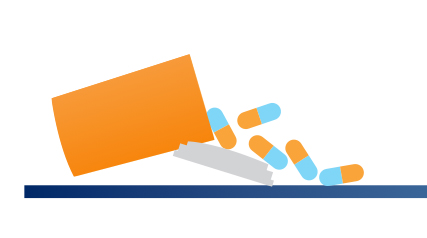The cost burden due to wasteful spending on medicines reached $213 billion last year in the US, according to IMS Institute for Healthcare Informatics. The waste stems from patients not getting the right drugs at the right time or in the right way, or receiving them but failing to take them.
For a country bent on healthcare cost control, the findings represent an opportunity. Nearly 8% of the nation’s total healthcare outlay of $2.7 trillion in 2012 could have been avoided, says IMS, which points out several areas, or “levers,” where savings can be achieved.
The study, called “Avoidable Costs in Healthcare,” dovetails with another recent piece of research, the IMS Institute’s US Medicines Report which found overall spending on medicines fell 1% to $325.8 billion last year.
As the previous study showed, “Access to medicines is a very important priority,” said Murray Aitken, executive director of the institute, during a briefing for media. “The responsible use of those medicines is equally important….Clearly, there’s room for improvement.”
The key contributors to unavoidable costs were medication non-adherence and delayed evidence-based treatment practice. IMS looked at four other so-called levers for improvement, but these two accounted for 68% of the total cost.
IMS says the avoidable cost opportunity from non-adherence is about $105 billion. That’s not to say there hasn’t been progress. Adherence among patients with the three most prevalent chronic diseases—diabetes, hypertension and hyperlipidemia—increased by about 3% to 7% since 2009. Among reasons behind the improvement was wider availability of cheap generic alternatives for off-patent branded drugs used in these three groups, such as Pfizer cholesterol-lowering drug Lipitor and Bristol-Myers Squibb blood thinner Plavix.
“There’s still a long way to go, of course, with respect to medication adherence, but this is a positive trend,” said Aitken. The encouraging news justifies further investment in adherence interventions, authors state.
Researchers also noted improvement in misuse of antibiotics—a $35 billion problem. Among patients diagnosed with the common cold or flu and who receive prescription antibiotics, inappropriate cases of such prescribing fell to 6% last year, from 20% in 2007.
Also important to acknowledge—patients are receiving lower-cost generic alternatives to branded medicines, when available for the same molecule and form, 95% of the time. That rate—known as “generic efficiency”—increased by 4% in the past five years.
This figure is not to be confused with the overall generic utilization rate, which the US Medicines Report recently pegged at 84% of prescriptions in the US in 2012, including both branded and unbranded generics. It’s predicted to rise to 87% in another five years.
While the 95% efficiency rate in the US is the best in the world, according to the study, it’s still suboptimal and a $12-billion boondoggle. Boosting the generic efficiency rate further can trim the number.
That’s a more reasonable goal than some might think. Authors assume that a maximum generic efficiency of 98% could be achieved in most therapy classes where generics are available and that the avoidable cost is $10 billion, increasing to $13 billion at 99% efficiency. Classes such as antihypertensives, analgesics, antibiotics and antidiabetics already are in excess of 98% generically efficient, says IMS.
Aitken was careful to note that all the report’s numbers were based on estimates. Avoidable costs are actually somewhere in the range of $140-295 billion. For instance, in adherence the researchers looked at six disease areas: cholesterol, diabetes, hypertension, osteoporosis, HIV and CHF. “Clearly there are other disease areas where non-adherence has an impact,” Aitken said. “If anything, we believe our estimates are likely to be conservative.”
Nor can readers compare the 2012 total to the ballpark figure on wasteful spending on medicines for 2011. That figure—$222 billion—was arrived at using different methodology.
As the country progresses further with implementation of the Affordable Care Act and pursuit of private-sector efforts, there’s reason for added optimism to avoid these avoidable costs, Aitken said. “The broad themes that have been supported by the ACA around the coordination of care, performance-based payment, a more integrated approach to delivery of healthcare—these are all elements that we can imagine will be positive forces in terms of addressing the avoidable costs we’ve described.”








